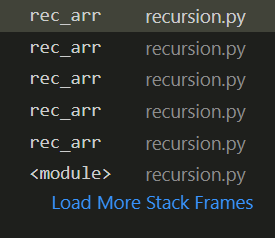Understanding Recursion - The Basics
 Ajinkya Akotkar
Ajinkya Akotkar
I hate recursion. But let's try to learn it together.
Recursion is just another way to repeat a task, like a for loop. Let's break it down.
How a For Loop Works
A for loop needs three things:
A starting point
A step (increment/decrement)
A stopping condition
Here’s a simple example in Python to print numbers from 1 to 5:
start = 0
stop = 5
step = +1
for i in range(start, stop, step):
print(i)
Another example: iterating through a to-do list:
arr = ["Leave home", "Get to the supermarket", "Add items to the cart", "Checkout", "Get back home"]
for i in range(0, len(arr), +1):
print(arr[i])
Understanding the Call Stack (Before Recursion)
A call stack is like a to-do list for a program:
It keeps track of tasks that need to be completed.
The most recent task is at the top.
The global task (main function) is at the bottom.
This is important to understand before diving into recursion.

Now, Let's Write a Recursive Function
Recursion is just a loop written differently.
Starting point?
5Step?
-1Stopping condition?
1
def rec(n: int, condition, step: int):
if condition(n):
print(n)
rec(n + step, condition, step)
def condition(n):
return n >= 1
rec(5, condition, -1)
Thinking of Recursion as a To-Do List
Let’s apply recursion to iterate over our to-do list:
arr = ["Leave home", "Get to the supermarket", "Add items to the cart", "Checkout", "Get back home"]
def rec_arr(n: int, condition, step: int, arr):
if condition(n, arr):
print(arr[n])
rec_arr(n + step, condition, step, arr)
def condition(n, arr):
return n < len(arr)
rec_arr(0, condition, +1, arr)
A Simpler Way to Write It
Here's a more compact version without needing an extra function:
def rec_arr(n, arr):
if n >= len(arr):
return
print(arr[n])
rec_arr(n + 1, arr)
rec_arr(0, arr)
Final Thoughts
Recursion is just a different way of looping.
Think of recursion as a to-do list that adds tasks to a stack.
Base case (stopping condition) is key to prevent infinite recursion.
Practice visualizing the call stack to understand recursion better.
Once you get used to it, recursion isn't so scary! 😃
Subscribe to my newsletter
Read articles from Ajinkya Akotkar directly inside your inbox. Subscribe to the newsletter, and don't miss out.
Written by

Ajinkya Akotkar
Ajinkya Akotkar
🚀 QA Engineer | Automation Enthusiast | DSA Explorer Passionate about automation, testing frameworks, and data structures & algorithms. I love solving problems, optimizing code, and sharing insights on QA automation, Playwright, Selenium, and DSA solutions. 🔹 Writing about coding best practices, automation frameworks, and problem-solving strategies 🔹 Open to collaborations and discussions on tech, testing, and full-stack development 🔹 Always learning, always building